Paris
Out of the many features that connect Paris to the splendours of Egypt's Pharaohs, few are enjoyed by so many of our fellow Parisians and visitors as the obelisk that adorns Place de la Concorde. The Luxor Obelisk is a splendid reminder of our two countries' shared history, and having made "Concorde" its home for almost 200 years it is worth remembering that another identical obelisk has remained in its original location on the banks of the Nile standing guard over the Luxor Temple for almost 3 millennia. Object of fascination for Westerners at the turn of the last century, London and Washington also have one.
Let’s take this obelisk as our starting point for our journey through time, across the legendary lands of Egypt and up to Aswan in the 1930s. In 5 days we’ll reach Alexandria. The 7:40am Pullman train awaits us in the Gare du Nord to take us in 1st class comfort through Laroche, Dijon, Lyon, Valence, Avignon and finally arrives in Marseille’s Saint-Charles station around 9:47pm.
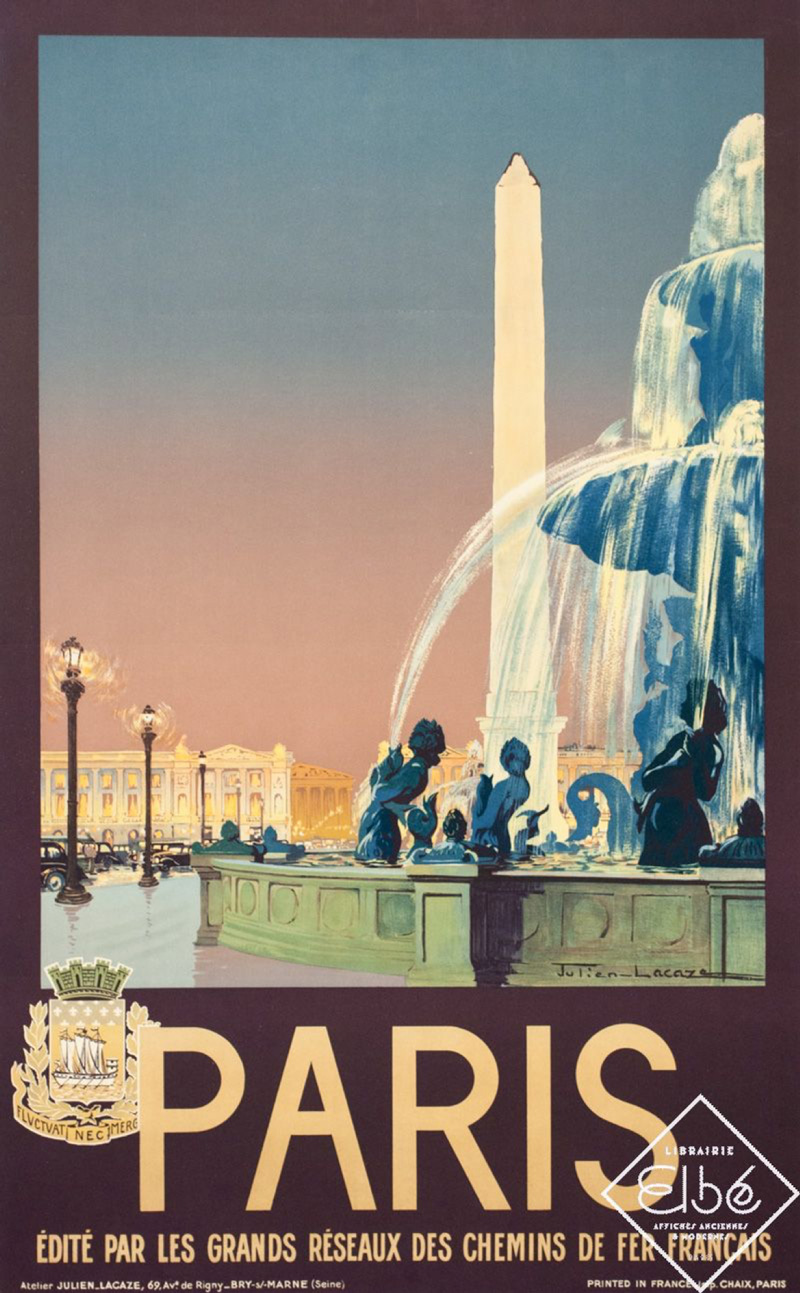
Travel poster for Paris from 1930 and signed by Julien Lacaze (1886-1971)
Marseille
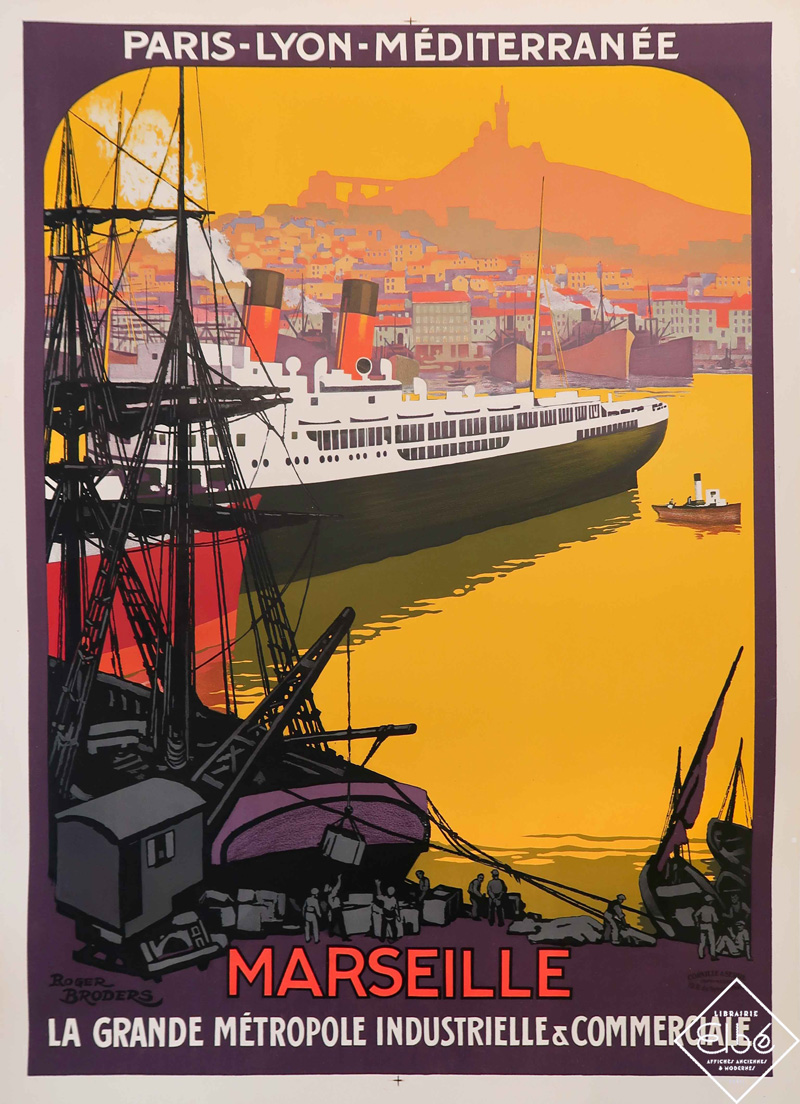
Marseille poster for the P-L-M company, circa 1925, by Roger Broders (1883-1953)
Marseille, with Notre-Dame de la Garde basilica watching over the historic port city, it’s too late for a visit, best to settle into the conveniently located Terminus hotel suggested by the P-L-M train company. It has 83 rooms, all with electric light and private bathrooms. Tomorrow we’ll discover the port, so beautifully rendered by Roger Broders in this poster from the end of the 1920s, with the town embracing the water and the dockers busying themselves around the mighty liners.
Mediterranean
The crossing from West to East takes just a few days, via Naples and Sicily. The merchant shipping company Messageries Maritimes runs regular services on its two latest ships: the Mariett Pacha and its sister ship the Champollion. We embark on the latter. Ancient Egypt iconography is all the rage since Howard Carter discovered the tomb of Tutankhamun in 1922.
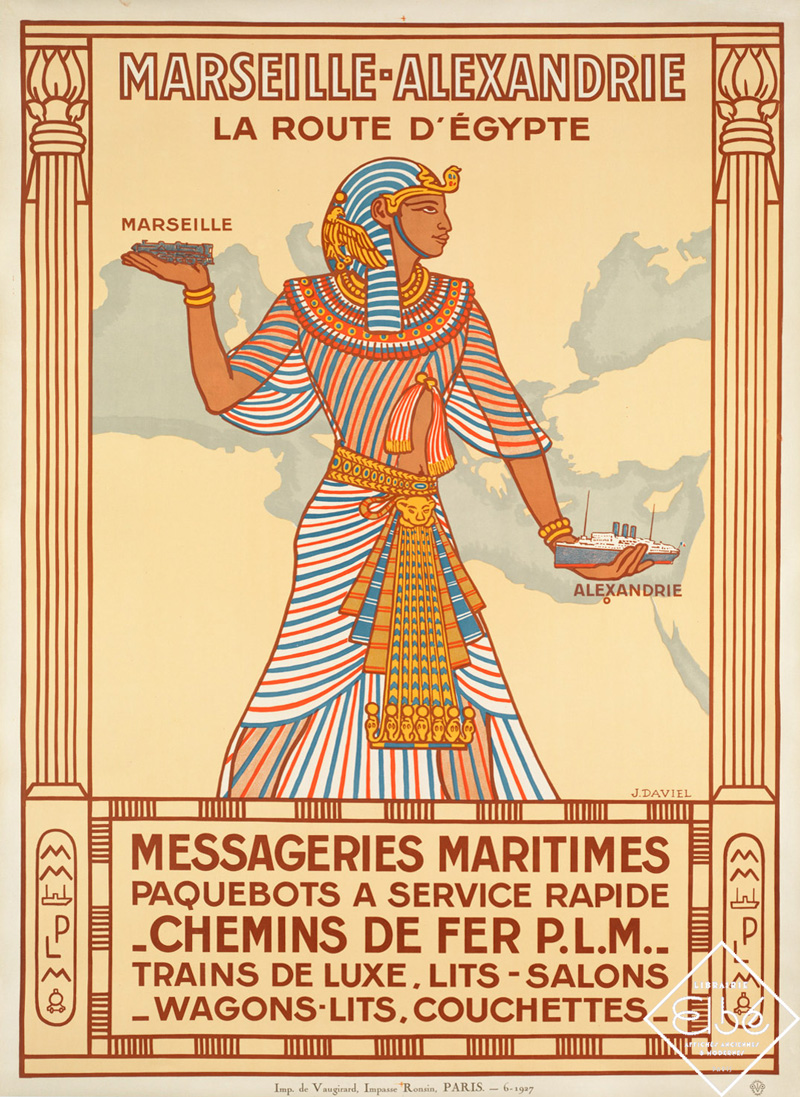
Messageries Maritimes poster by J. Daviel in 1927
Launched in 1924 the ship is about 160 meters long and 20 meters wide, it has 3 funnels allowing it to cruise comfortably at 16 knots to reach Alexandria in 4 days. Lavishly decorated in Egyptian style, the 1st class accommodation includes a smoking room, a music room and a winter garden. Shown here in a 1925 poster by maritime painter Sandy Hook, it cruises in front of a mask reminiscent of that made for the son of Akhenaten.
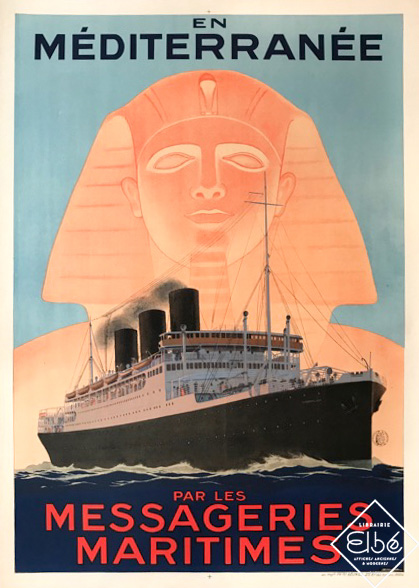
Poster by the Messageries Maritimes, The Champollion, signed by Sandy Hook. Printed by les imprimeries Françaises Réunies, Circa 1930
Alexandria
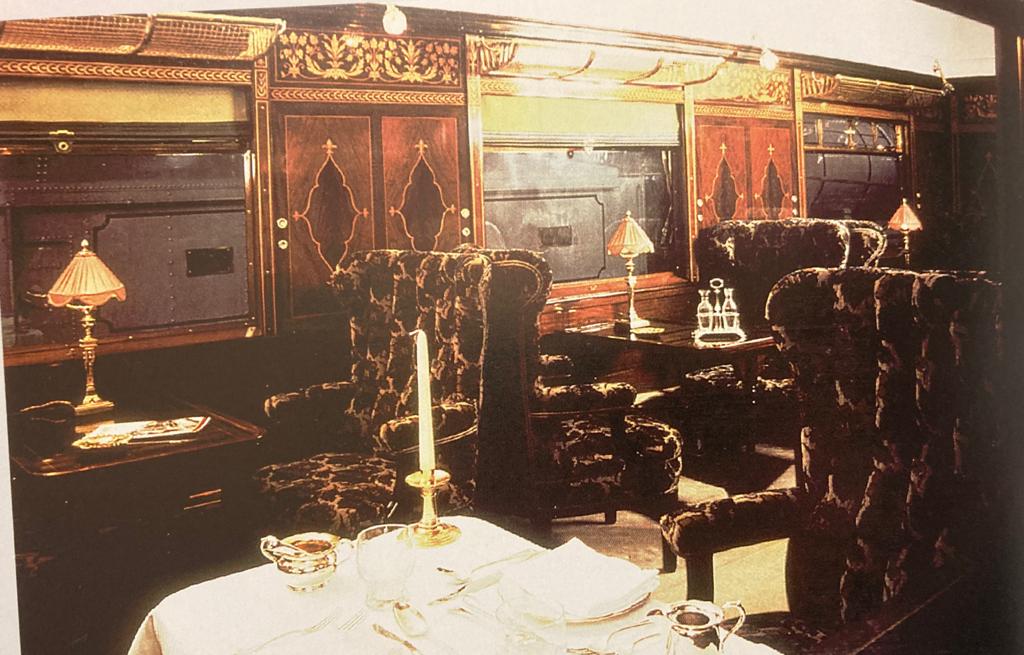
1st Class train cabins are redolent of European drawing rooms
Once in Alexandria, under British protectorate since 1882, reaching Cairo is quick and easy.
The Compagnie des Wagons-Lits offers the best services in under 3 hours. A first-class ticket costs 22.70 Francs.
The ornate and plush furnishings of the cabins emit a hushed atmosphere, wafts of cigar smoke encircle nonchalantly the rows of Chesterfields, we could be in a London club.
Indeed, the waiters eye their customers diligently and cater to their every need. As the first brandies are brought in on silver platters specially commissioned for La Compagnie, the moods lift and the sea motion gently ebbs away as the train pulls out of the main station.
Cairo
Cairo is intoxicating, all the senses are sharpened in this most ancient city. A few automobiles make their way diligently through the hustle and bustle of bullock carts, barrows, mules, bicycles, donkeys, camels, horses and mares all moving in opposite directions and yet never colliding. The scene is typical of Cairo and the sound even more so – you could picture it perfectly your eyes closed. In the European quarters, though different, the bustle continues with a ballet of waiters, butlers, laundresses, maids and all kinds of errand-boys calling out to each other while carrying out their duties. We start to see more Tommies and British officers in uniform, particularly as we approach the Semiramis hotel on the banks of the Nile, where the General Staff have elected residence.
Choosing where to stay in Cairo is daunting – there are so many fabulous palace hotels to choose from: National Hotel, Shepheard’s, Semiramis, Mena House, Continental, Ghezireh, Savoy. The choice of food, however, tends to favour European tastes, with hardly any local fare at all.
Caroline consommé, salt-marsh lamb with spring vegetables, ox-tongue with spinach, creamy cardoon soup, spit-roasted Le Mans capon… are a few of the dishes on offer for supper at the Continental in Cairo in 1930.
Let’s choose to stay at the legendary Mena House Hotel, built in 1869 by the ancient sites of Gizeh. Should we stay long enough we’d be sure to meet Mrs Agatha Christie, who is writing the second chapter of her novel Death on the Nile there towards 1930-35. We’d probably also cross paths with an as-yet relatively unknown Winston Churchill, whose talent for painting is all too often overlooked. But also the author Arthur Conan Doyle, King George V and the filmmaker David Lean, famous for his Lawrence of Arabia, have all inhabited this exceptional place.
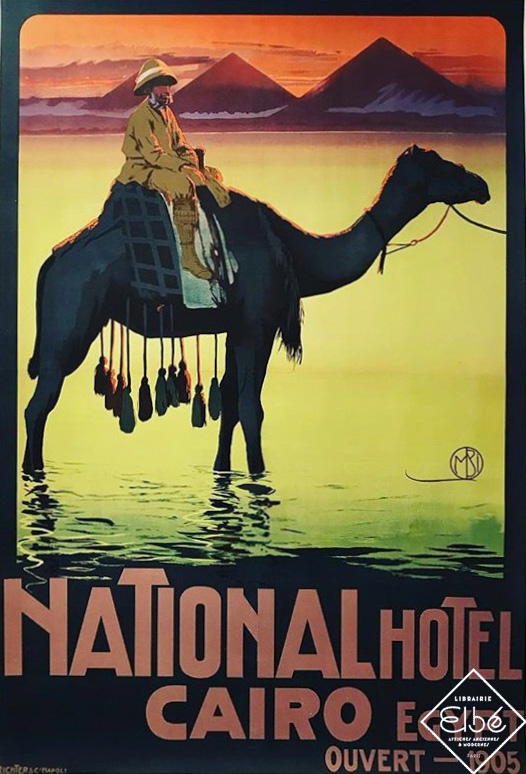
Poster by Mario Borgoni (1869-1936) printed by Richter in Naples, circa 1920
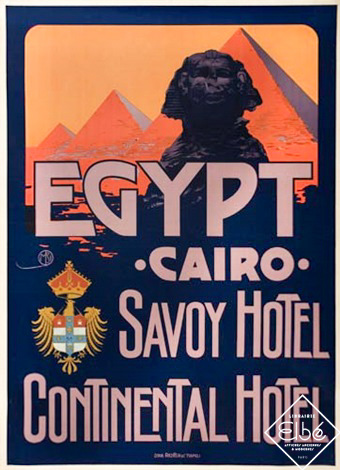
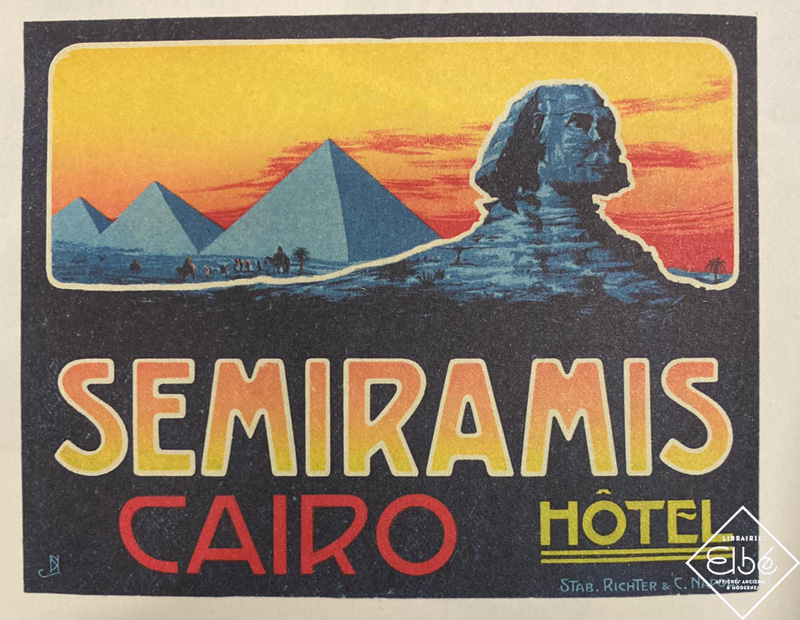
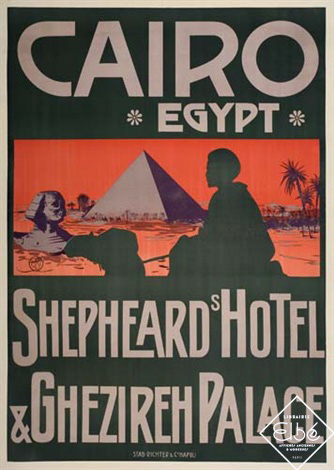
The Nile
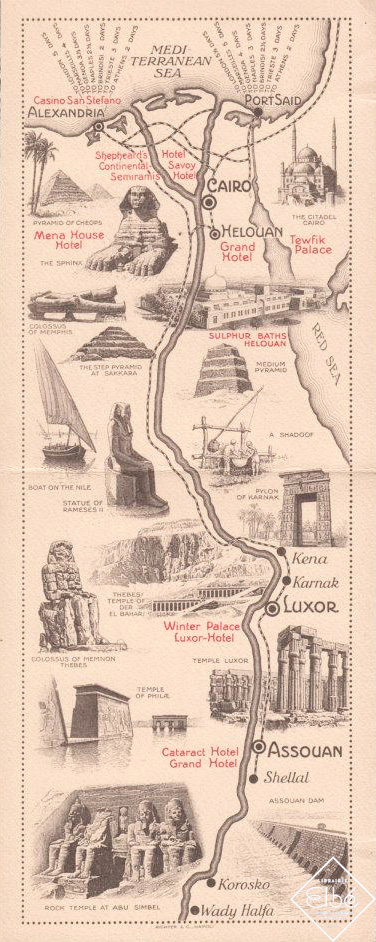
Tourist map of Egypt published in London circa 1920 and printed by Richter in Naples
Printed in the 1920s by Richter in Naples, our tourist map highlights our journey points. Cairo, Edfu, Karnak, Luxor and Aswan.
Leaving Cairo we’ll follow the Nile up, inspired along the way by the orientalist style of Englishman Augustus Osborne Lamplough (1877-1930) who was commissioned in the 1900s to convey the warm beauty and cultural richness of Egypt to the elites of Europe, the budding archaeologists and amateurs of ancient history, enticing them to visit the land of the Pharaohs. Following this successful campaign, he received further commissions from the Egyptian State Railways in the 1910s. The timeless qualities of Lamplough’s artwork was typical of western society’s fascination for the desert and the exoticism of the Near East.
Imagine yourself floating along the Nile on a felucca with a minimal crew, the sandbanks expertly avoided until we finally reach the first cataract.
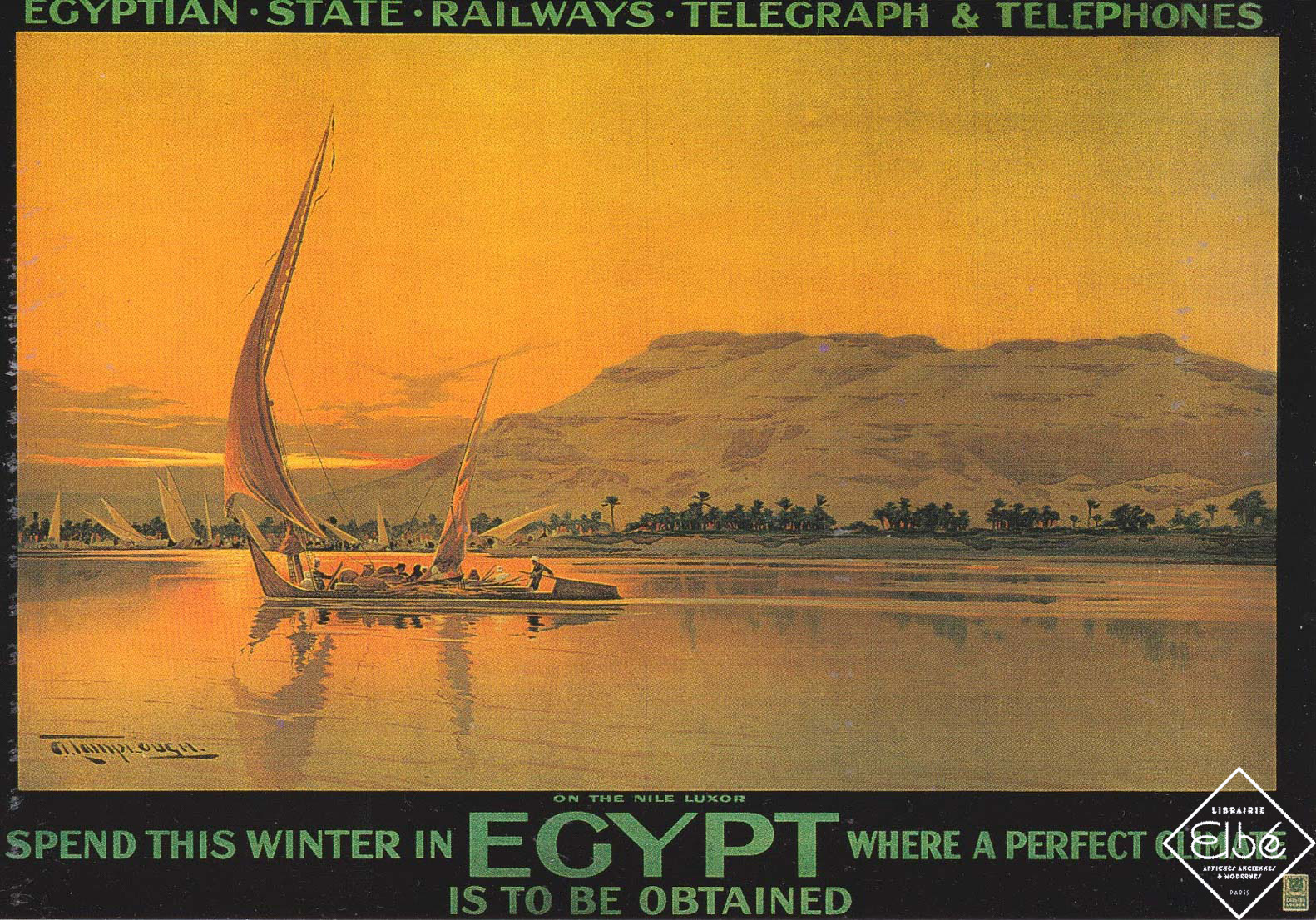
Poster promoting Egypt in winter, signed by A. O. Lamplough, circa 1910
Karnak
Life on the Nile is punctuated by the natural rhythms of wildlife cycles, traditional farming methods, ancient customs and the regular calls of the minarets along the river.
Here and there, children splash about, small boats come up to offer fresh fruit and other local produce.
Each night a new camp is put up – being served mint tea in your tent with the sun setting fire to the dunes at dusk seems to halt time. Then being awed by Luxor, the Valley of Kings, the majesty of the colossi of Memnon, losing oneself in the towering temple columns in Karnak.
The climate, the sights, the colossal bewilderment of antiquity would make your head spin uncontrollably were it not for the generous hospitality of the local Egyptians.
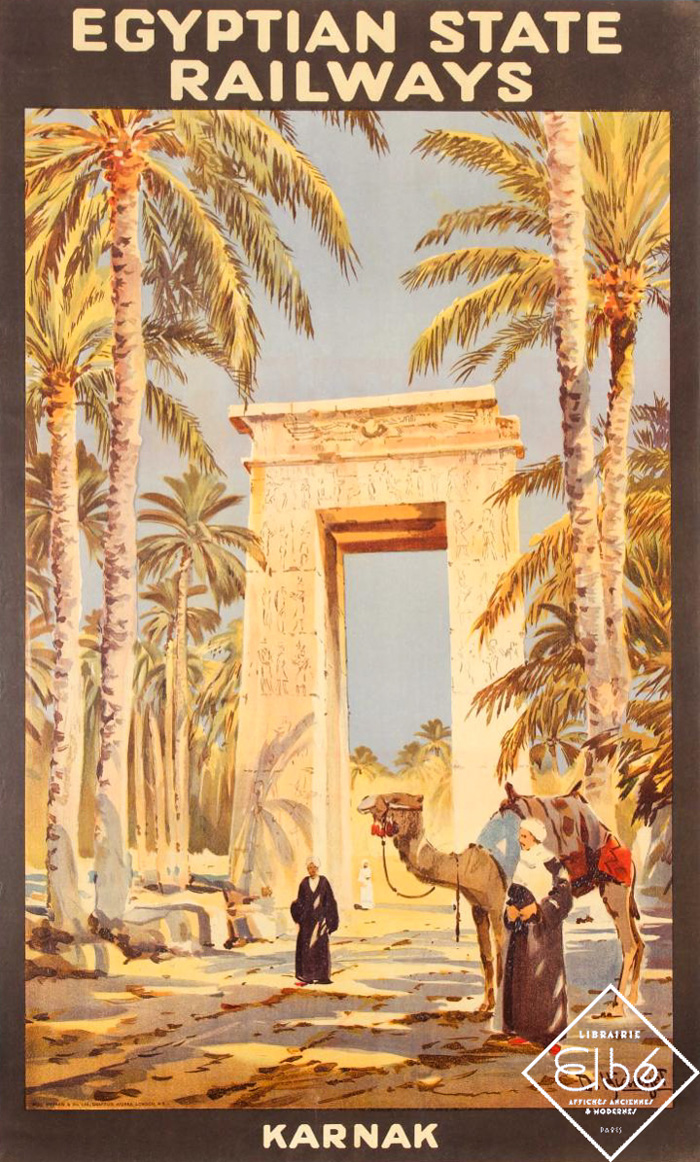
British poster promoting the sites of Karnak, signed D. Hidayet (born Turkey circa 1895 - 1971) circa 1920
Aswan

Poster Chemins de Fer de l’Etat Egyptien, Crépuscule en Egypte, signed A. Lamplough, imp. Mc Corquodale & Cie Limited London, 1911
Final destination, Aswan, from where we can go on several smaller expeditions. But first, we take residence in the finest hotel around, the famous Old Cataract, opened in 1902.
Its caramel-coloured walls going up 2 floors screen a lush garden, a true oasis. Its high terrace dominates the Nile and the first cataract, with the Elephantine Island just below which we intend to visit first.
Sitting on the edge of the Nubian empire and Upper Egypt, it became an important centre for the ivory trade coming from Africa, protected by a fortress dating back 6000 years.
Going back
For many a dreamer, scientist, politician or author, this is as far as the journey went. Though leaving the incomparable beauty and majesty of Egypt must have felt like being wrenched out of a splendid dream. Perhaps a few did pursue the dream by taking up winter residences in lands of the Pharaohs, no doubt nurtured by the orientalist ideals illustrated profusely at the time by the early Western travel pioneers. We’d like to think the dream lives on even today.
A bientôt,

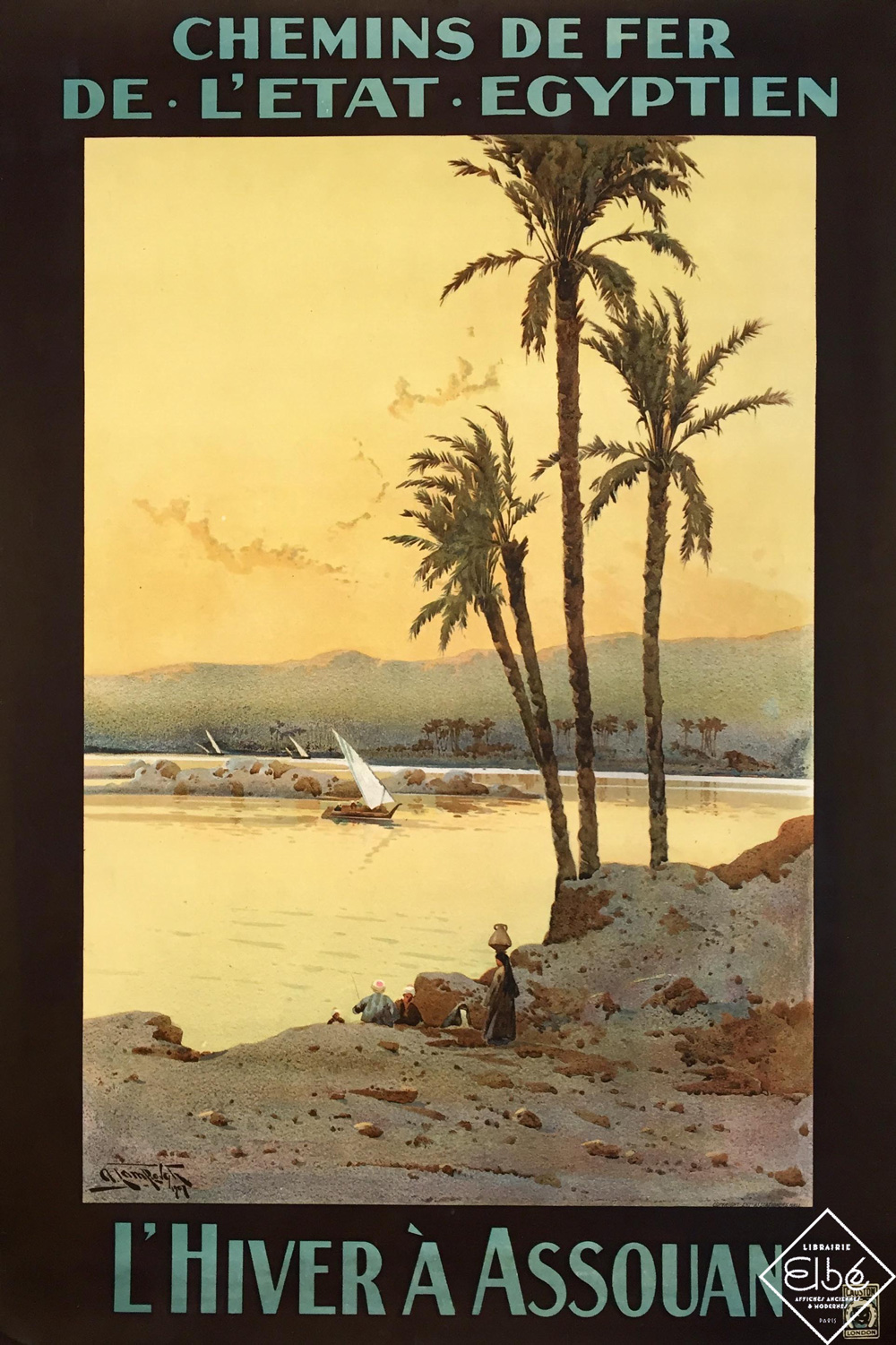
Poster of Chemins de Fer de l’Etat Egyptien, l’hiver à Assouan, signée A. Lamplough, imp. Causton London, 1907
